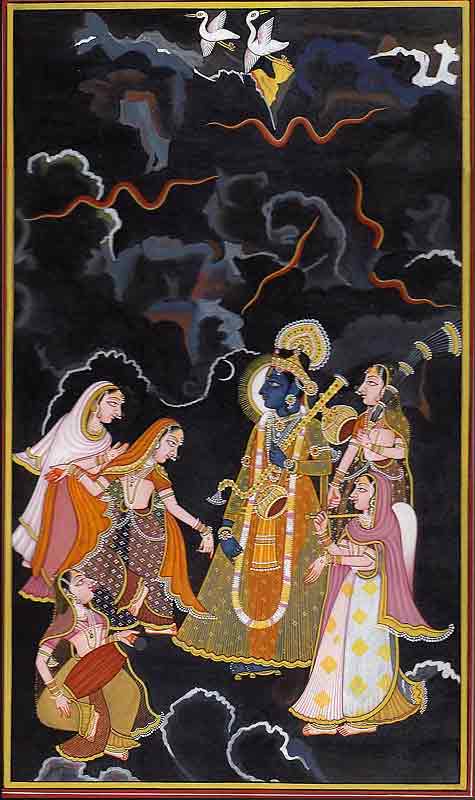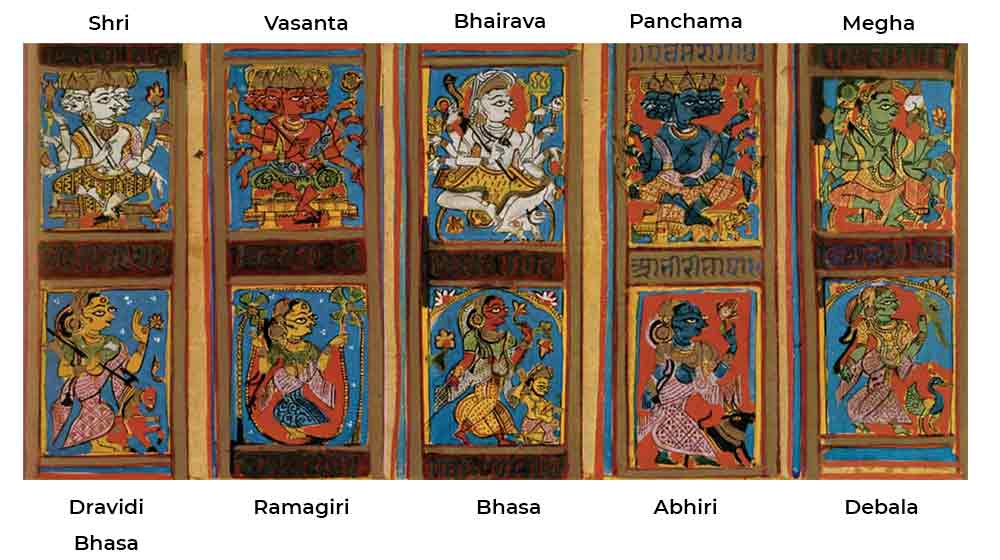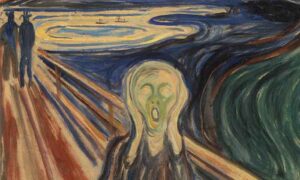RagaMala: Incredible Miniature Paintings Explore A Fascinating Indian Art Form
A Raga is a “permutation and combination of notes or frequencies depicted by melodic motions, which are capable of producing a pleasant, sensation, mood, or emotion in the mind of the listener,” according to the definition of music in India.
These six Ragas, or note combinations, are essentially what ancient Indian writings refer to as. Each Raga has eight Ragaputra’s, or sons, and five Ragini, or wives. While the Ragini’s have a heptatonic scale and are regarded as female, the Ragas, which are considered male, have a pentatonic scale.
The six major Ragas – Bhairav, Dipaka, Sri, Malkaunsa, Megha, and Hindola – are intended to be sung in six seasons of the year: summer, monsoon, autumn, early winter, winter, and spring.

Ragamala was one of the most well-liked styles of Indian miniature painting for around 400 years. Admirers of painting, poetry, and music would have requested and traded these wonderful painted melodies. However, this genre declined in the late 19th century as a result of the collapse in aristocratic patronage after flourishing in the royal courts of India from the second half of the 15th century.
In the majority of Indian painting centers, ragamalas were produced, although in most instances, the painters and scribes’ identities are still unknown. We can identify ragamalas of specific eras and locations by interpreting inscriptions and regional images.
Visual Analysis Of Ragamala Paintings
Bhairava is the head of the first family of Ragas and is shown as a form of Lord Shiva in most ragamala albums. The Raga, which is sung before morning to elicit vitality, spells out the rhythmic image of Shiva in his Bhirava form.
In contrast to Lord Bhairava’s celestial aspect, Malkaunsa is shown as a human lord. His Ragains, who are fair-skinned and aristocratic, are said to be steeped in the color of love. Malkaunsa has unfathomable depth as a Raga and is frequently sung after midnight.
Raga Megha is a melon of clouds and rains and is intended to be performed during the rainy season. Its depiction may portray heavy storm clouds or lightning streaks while a joyful Krishna dallies with a slew of Maidens.
The Raga Hindola is portrayed by a swing, as its name would imply. On the swing is a prince or Lord Krishna, either with or without his consort. Also present are a number of female companions. Rain is frequently included in the background of the picture to indicate the start of a cooler season.
Raga Dipak: Tansen, the renowned musician at the court of Emperor Akbar, is rumored to have ignited a palace fire when Tansen was told to perform Raga Dipaka, meaning flame. However, painters have had no trouble rendering this Raga. Varied schools of Indian miniature painting have different approaches to the necessary flame. It might represent a lamp in the bedroom of a pair of regal lovers or be connected to Diwali, the festival of lights.
Raga Sri: The harvest fortunes were initially linked to Raga Sri, which was named after the goddess Lakshmi. There are several methods to visualize the raga, but Sri is the only one to do it with a horse-headed kinnara (a celestial musician). When it is absent, Malkaunsa’s iconography can readily be confused with it.
Early Ragamalas
Hindustani musicians from the middle ages named each raga after a god, possibly to help them remember its melodic structure. Later, intrigued poets of the late medieval era gave the ragas human characteristics and developed their stories using strong verbal description. These tales, along with other important books on Indian classical music, served as the ragamala painting’s poetic inspiration.
On the margins of a now-missing manuscript from western India, dating to around 1475, is the earliest instance of ragamala painting that is known to exist. The text was animated with pictures of people dancing and musical notes that had personalities.
Surviving example of ragamala art and the 15th-century text seen here are separated by around a century.
The Ragamala Migration
Ragamala painting subjects and styles were passed down through the Mughal era (16th–19th century) due in large part to the frequent shifts in administrative and military posts around the empire. Painters and scribes most likely traveled the Indian subcontinent with their aristocratic customers. Curiously, imagery frequently found in early ragamalas from Rajasthan in northern India is reproduced in later ragamalas from other remote regions of the Empire.
In the Deccan region of southern India, where larger ragamala sets with up to 86 paintings were more common, artists from Rajasthan, who typically created small ragamala sets of 36 or 42 paintings, would go. When given orders for more intricate ragamalas, Rajasthani painters and writers would recreate themes they were already familiar with and fill in the gaps.
The movement of ragamalas and artists from southern India to the north had an impact on the development of “hybrid” iconography that was based on conjecture and puns on the various connotations of the word “raga.”
Resource Suggestion
Visit Heritage Lab, Ragmala Paintings: Visualizing Music & Mood : https://www.theheritagelab.in/ragmala-paintings/



